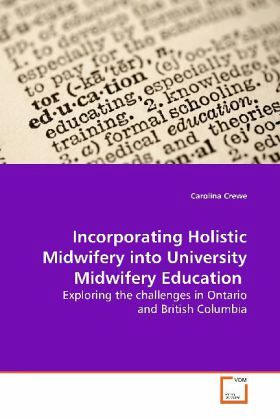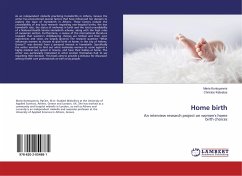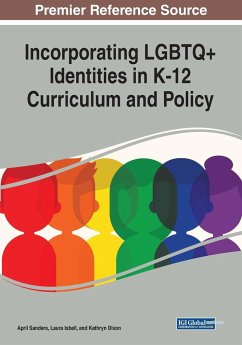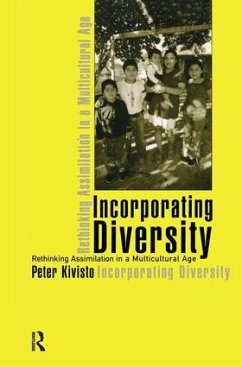
Incorporating Holistic Midwifery into University Midwifery Education
Exploring the challenges in Ontario and British Columbia
Versandkostenfrei!
Versandfertig in 6-10 Tagen
45,99 €
inkl. MwSt.

PAYBACK Punkte
23 °P sammeln!
The development of University Midwifery EducationPrograms (UMEPs) has been a key component of themidwifery professionalization process in Ontario andBritish Columbia. The choice to develop UMEPs has seta standard for professional midwifery training. The goal of this study is to highlight the genderedstruggles of midwifery, as a female dominatedand historically marginalized occupational group, inits attempt to integrate into pre-existinghierarchies of the university structure. Specificchallenges of this process include tensions aroundinter-professional collaboration and faculty sharingwith domi...
The development of University Midwifery Education
Programs (UMEPs) has been a key component of the
midwifery professionalization process in Ontario and
British Columbia. The choice to develop UMEPs has set
a standard for professional midwifery training.
The goal of this study is to highlight the gendered
struggles of midwifery, as a female dominated
and historically marginalized occupational group, in
its attempt to integrate into pre-existing
hierarchies of the university structure. Specific
challenges of this process include tensions around
inter-professional collaboration and faculty sharing
with dominant disciplines such as Health Sciences
and/or Medicine,enculturation of masculine/feminine
professional characteristics, struggles to value
practicum learning components, visibility/obscurity
within the university, struggles for achieving
diversity in the student/client population, gendered
dimensions of earnings potential and labour
im/mobility. Similarly located marginalized groups
attempting integration into a university structure
are likely to experience similar exclusionary
measures related to factors including gender,
sexuality, ethnicity and race.
Programs (UMEPs) has been a key component of the
midwifery professionalization process in Ontario and
British Columbia. The choice to develop UMEPs has set
a standard for professional midwifery training.
The goal of this study is to highlight the gendered
struggles of midwifery, as a female dominated
and historically marginalized occupational group, in
its attempt to integrate into pre-existing
hierarchies of the university structure. Specific
challenges of this process include tensions around
inter-professional collaboration and faculty sharing
with dominant disciplines such as Health Sciences
and/or Medicine,enculturation of masculine/feminine
professional characteristics, struggles to value
practicum learning components, visibility/obscurity
within the university, struggles for achieving
diversity in the student/client population, gendered
dimensions of earnings potential and labour
im/mobility. Similarly located marginalized groups
attempting integration into a university structure
are likely to experience similar exclusionary
measures related to factors including gender,
sexuality, ethnicity and race.












